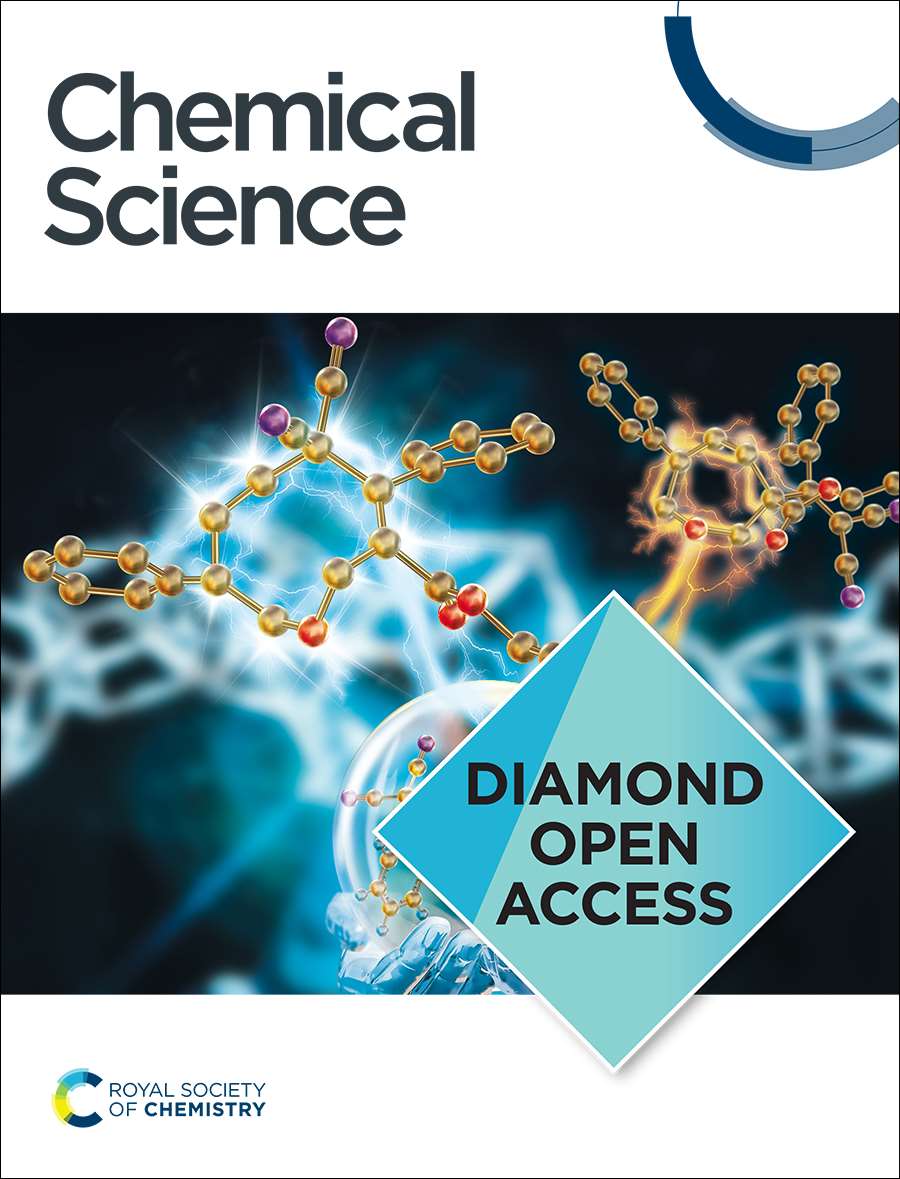Electric field-driven interfacial reduction of metal ions in microdroplets: gold, silver, and nickel
IF 7.4
1区 化学
Q1 CHEMISTRY, MULTIDISCIPLINARY
引用次数: 0
Abstract
A bulk aqueous solution containing 100 μM HAuCl4 has been shown to spontaneously form gold nanoparticles (Au NPs) in 2–3 days when stored at room temperature. We demonstrate that Au NPs can be spontaneously formed within a few microseconds to milliseconds when the same solution is sprayed in the form of microdroplets (10–30 μm in diameter) using N2 as the nebulizing gas under ambient conditions. The rapid formation of Au NPs establishes that the air–water interface of microdroplets plays a dominant role. The reduction of metal ions in water microdroplets is driven by electron transfer at the air–water interface of water microdroplets aided by the strong electric field and the lack of three-dimensional solvation at the surface. The reduction of metal is accompanied by the formation of H2O2 resulting in part from the recombination of OH˙ produced at the interface. We observed that the size of the Au NPs increases when the distance between the tip and collector increases suggesting the rapid nucleation and growth of Au NPs within the microdroplets. The nanoparticle generation in microdroplets is not limited to Au, and we extend the scope of this method to other metals such as silver (Ag) and nickel (Ni) indicating a minimal role of the metal's position in the electrochemical series. When polar protic solvents such as CH3OH, and C2H5OH replace water as a solvent, Au NPs are seen to be formed but at a much slower rate whereas in acetonitrile (ACN), the Au NPs' formation is negligible.

电场驱动的金属离子在微滴中的界面还原:金、银和镍
含有100 μM HAuCl4的散装水溶液在室温下保存2-3天即可自发形成金纳米颗粒(Au NPs)。研究表明,在常温条件下,以氮气为雾化气体,以微液滴(直径10-30 μm)的形式喷射相同的溶液,可以在几微秒到几毫秒内自发形成金纳米粒子。Au NPs的快速形成表明,微滴的空气-水界面起主导作用。微水滴中金属离子的还原是由微水滴空气-水界面的电子传递和强电场的辅助以及表面缺乏三维溶剂化驱动的。金属的还原伴随着H2O2的形成,部分原因是在界面处产生OH˙复合。我们观察到,随着尖端和收集器之间距离的增加,Au NPs的尺寸增加,这表明Au NPs在微滴内快速成核和生长。微液滴中的纳米颗粒的产生并不局限于Au,我们将这种方法的范围扩展到其他金属,如银(Ag)和镍(Ni),这表明金属在电化学系列中的位置作用最小。当极性质子溶剂如CH3OH和C2H5OH代替水作为溶剂时,可以看到金NPs的形成,但速度要慢得多,而在乙腈(ACN)中,金NPs的形成可以忽略不计。
本文章由计算机程序翻译,如有差异,请以英文原文为准。
求助全文
约1分钟内获得全文
求助全文
来源期刊

Chemical Science
CHEMISTRY, MULTIDISCIPLINARY-
CiteScore
14.40
自引率
4.80%
发文量
1352
审稿时长
2.1 months
期刊介绍:
Chemical Science is a journal that encompasses various disciplines within the chemical sciences. Its scope includes publishing ground-breaking research with significant implications for its respective field, as well as appealing to a wider audience in related areas. To be considered for publication, articles must showcase innovative and original advances in their field of study and be presented in a manner that is understandable to scientists from diverse backgrounds. However, the journal generally does not publish highly specialized research.
 求助内容:
求助内容: 应助结果提醒方式:
应助结果提醒方式:


